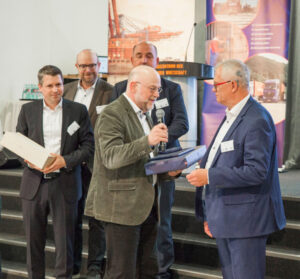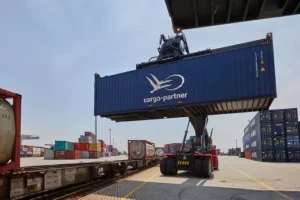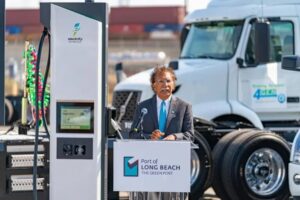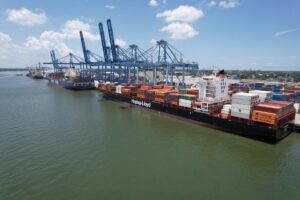The Port of Long Beach has seen its diesel soot fall by 88% and greenhouse gasses by 19% since 2005, according to a newly completed study of air pollution in the area.
The Port’s annual emissions inventory report, presented to the Long Beach Board of Harbor Commissioners on Thursday, shows the Port continued to demonstrate low levels of emissions for diesel particulates and sulfur oxides in 2019 despite containerized cargo at the Port of Long Beach growing 14% since 2005.
According to the 2019 inventory, diesel particulates have decreased 88%. Sulfur oxides are down 97%, while smog-forming nitrogen oxides have decreased 58%. Greenhouse gas emissions reductions were 19%.
The pollution levels are all compared to the 2005 baseline, the year before the original San Pedro Bay Clean Air Action Plan (CAAP) was adopted.
“Together with our supply chain partners, we have made significant progress in improving air quality and reducing health risks,” said Long Beach Harbor Commission President Frank Colonna.
“Although we are meeting most of our emissions goals, it is becoming clear we are at the limits of existing technology. That’s why we are investing millions to develop and deploy the cleaner equipment.”
The CAAP was last updated in 2017 and incorporates numerous strategies to continue to reduce emissions from port-related operations in San Pedro Bay. The Port is making a significant investment into developing and demonstrating the first-of-its-kind, zero-emissions equipment through the Technology Advancement Program, and other grant-funded projects, to support future wide-scale deployment.
The Port is currently implementing demonstration projects that will test 60 different pieces of zero-emissions equipment. Approximately 15% the cargo-handling fleet at the Port is already zero emissions today.
Port of Long Beach Executive Director Mario Cordero, also commented: “Right now, we have $150 million in projects all across our port, all in the name of cleaner air.
“We are aggressively pursuing the CAAP goals of having a zero-emissions cargo-handling fleet by 2030 and all zero-emissions drayage trucks by 2035.”
The annual emissions inventory is reviewed by the U.S. Environmental Protection Agency, California Air Resources Board and South Coast Air Quality Management District. Learn more about the Port’s emissions inventories here.









